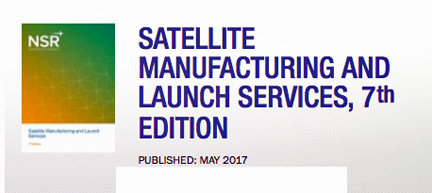
NSR’s Satellite Manufacturing and Launch Services, 7th Edition (SMLS7) report, just released, forecasts 2,356 satellites are expected to launch during the coming decade, with both GEO and non-GEO satellite operators turning to diverse solutions to remain competitive with space-based and terrestrial players — NSR identified a growing focus on leveraging advanced technologies and new practices in optimizing satellite business cases across all satellite applications.
“New platforms, flexible and more capable payloads, mass production, satellite servicing, reusable launch - myriad options are now available to operators in their toolbox as they diversify their solutions to respond to an evolving market,” stated Carolyn Belle, NSR Senior Analyst and report author. “Non-GEO constellation projects, capacity and data pricing declines, and evolving end-user demand are creating a new market environment. The near-term result was a low 2016 commercial GEO order rate expected to continue into 2017, but long-term, NSR expects a rebalancing of the market to involve unique architectures in GEO, and non-GEO, and a combination of the two.”
NSR’s SMLS7 study also found that government and military satellite markets demonstrate equally robust activity. “The value of space for economic development and national security continues to drive interest in launching space-based platforms, leading to a 10 percent increase in average launch rates in the coming decade,” continued Belle.
From science to Earth Observation to situational awareness, the pursuit of space projects by experienced and developing space-faring nations will generate an average $17.5B in revenues annually.
As space utilization increases and emerging constellations are deployed, preservation of the space environment will become more important than ever. Efforts to manage not only spectral interference between satellites but orbital traffic and debris are attracting more attention, with both commercial and government players needing to actively seek sustainable solutions that enable ongoing health of the industry at large.

